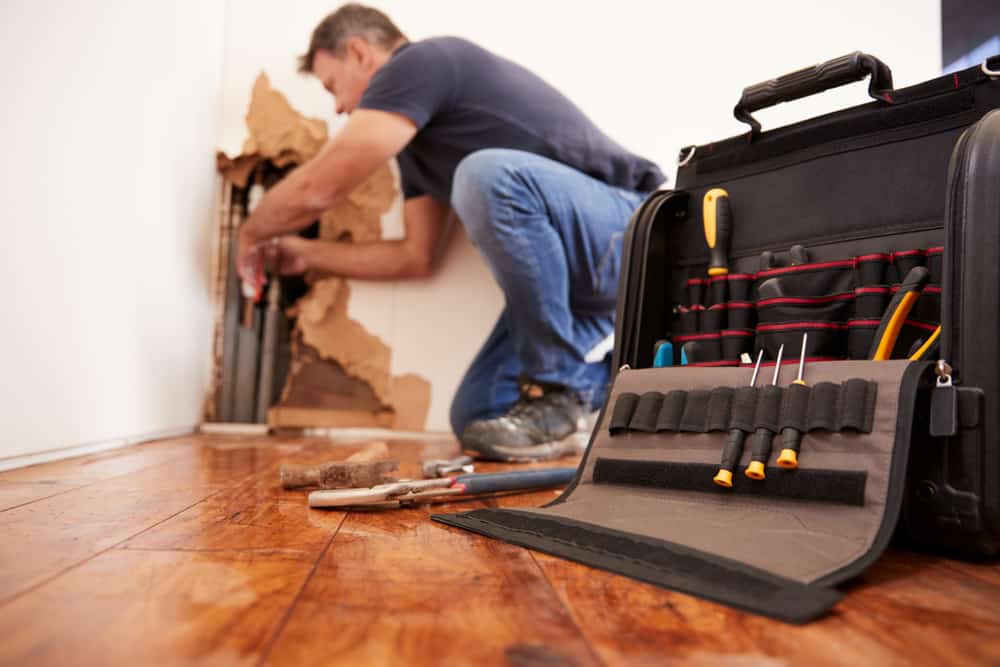
Learn All You Need To Know From The Experts
At 1-800 WATER DAMAGE of North Dallas, we are seasoned professionals in flood restoration. We recognize that while achieving complete flood-proofing is nearly impossible due to the unpredictable nature of Mother Nature, there are proactive measures you can take to mitigate the risk of flooding and minimize damage to your home. Each storm is different, and every property and community drainage plan is unique, necessitating preparation for a variety of scenarios.
If you’re visiting our site to find ways to prevent flooding in your McKinney home, you’re in good company. Although we can’t control the weather, we can provide practical tips to help you safeguard your home against flooding and reduce its impact. Whether you’re looking to flood-proof your house or learn methods to keep water out, you can count on 1-800 WATER DAMAGE of North Dallas for expert advice and support.
NOTE: This is only intended as an overview of basic recommendations for helping prevent water damage during minor flooding. To fully understand your home or business’s flood risk and explore resources to help you best navigate that risk, we recommend checking out FEMA’s in-depth guide, “Know Your Flood Risk: Homeowners, Renters or Business Owners.”
-
Preparing the Outside of Your House
Whether you’re living in a newly built house or an established home here in McKinney, there are effective measures you can take to prevent flooding and minimize the risk of water damage. By focusing on the exterior of your property, you can create a protective barrier against flooding and reduce the likelihood of needing extensive cleanup after a flood event.
New Builds
When constructing a home, prioritizing elevation and location is key to enhancing flood resilience. By ensuring that your home is adequately elevated and positioned away from river channels and shorelines, you can take proactive steps to protect it from potential flood damage. In many areas prone to flooding, local building regulations already mandate that new homes be constructed above designated flood levels, further reinforcing the importance of this precautionary measure.
Landscaping is another key feature for preventing flooding inside your home. Yards should be properly graded to allow water to drain away from your house and foundation. Plants, trees, and shrubs should also be installed to absorb more water, minimize runoff, and reduce erosion.
Fully-grown trees and clustered plantings are especially advantageous as they boast extensive root systems that facilitate drainage effectively. Even if your property isn’t situated in a flood-prone zone, implementing landscaping strategies to divert water away from your home remains a wise practice.
Existing Homes
Following the same landscaping recommendations for homes that are already built can ensure the exterior of your house will be the first line of defense against flooding. There are also some important exterior property maintenance tasks that should be done regularly to deter water from leaking into your home:
- Windows and doors: Regularly inspect your home for cracks and gaps, and promptly seal any you find. Additionally, remember to check the weatherstripping regularly, as it can warp or deteriorate over time.
- Roof: Inspect your roof for missing or broken shingles. If you are worried or suspect any problems, contact a qualified roofing company to conduct a full roof inspection. Be sure to take care of any roofing issues right away.
- Downspouts and Gutters:
Make sure to keep your downspouts, gutters, and gutter guards clear of debris and pointed away from the house. This allows water to drain freely and be diverted away from the foundation of your home. If water is pooling near your foundation, consider installing downspout extensions to redirect the flow away from the house.
Preparing the Inside of Your House
Flood-proofing the interior of a house is largely about minimizing the damage that can be caused if or when flooding occurs. Whether you’re concerned about new construction or an existing house, you can prepare the inside of your home to handle a flood situation in several ways.
New Build Interiors
Elevate utilities and appliances. Best practice is to elevate mechanical units, furnaces, water heaters, electrical systems, and other utilities on masonry, concrete, or pressure-treated lumber at least 12 inches above the base flood elevation (BFE).
Consider installing a sump pump in your McKinney home. Sump pumps are frequently added or upgraded in existing homes after experiencing basement flooding. However, if you’re constructing a new home, installing a sump pump from the beginning is a proactive measure to prepare for and prevent potential basement flooding.Existing Home Interiors
For existing homes, there are still some effective ways to minimize flood damage when flooding does occur:
- Flooring: Replace carpeting with tiles.
- Reseal and waterproof the basement: Over time, foundations or floor slabs may develop cracks, leading to water seepage into a previously dry basement. Even cement floors and walls can deteriorate over time, potentially exacerbating the issue.
- Inspect appliances: Appliances are a common culprit of plumbing-related floods. Inspect your appliances regularly to ensure there are no cracks or leaks. Check the hoses and supply lines of water heaters, dishwashers, washing machines, refrigerator ice makers, and any other appliances connected to water.
- Travel considerations: Before going on vacation, it’s wise to shut off the water supply to your home. If someone is staying in your absence, make sure they are familiar with how to turn off the main water supply in case of an emergency.
Additional Steps When a Flood Is Imminent
- Securing yard items: If a flood is anticipated, secure items in the yard (benches, sheds, grills, etc.) in advance.
- Prevention measures: In the event of an impending flood, deploying sandbag barriers and boarding up your home can serve as effective preventive measures to mitigate flooding. These actions can help keep floodwater from entering your house during a crisis.
A few last flood preparedness tips: you can lift the furniture off the floor to protect it as much as possible. Pack items in waterproof bins and place them on shelving that’s off the floor. Store any important items or documents off-site.
You’re Flooded. Now What?
Homeowners with the best intentions of flood-proofing a house need to know what to do if their home does become flooded. This is where 1-800 WATER DAMAGE of North Dallas helps property owners get their homes back to a pre-loss, liveable condition.
Our water damage restoration specialists in McKinney are trained for flood situations and know what remediation tools and processes are necessary to restore a residential property to its pre-loss condition. Our team is fully vetted, IICRC-certified, and insured.
We assess the property in every situation to determine the best restoration solution. Depending on the source of the flood, there can be contaminants in the water that need to be managed in a precise way. Our teams at 1-800 WATER DAMAGE of North Dallas are fully trained and prepared to handle any flood and water damage situation we encounter.
Call 1-800 WATER DAMAGE of North Dallas now at 469-689-8680 to learn more about flood proofing your home or a free consultation today!
-
Request A Quote Or Service Today
What Our Customers Say
Want to learn more about flood proofing your home? Request Service
Latest News
The Latest News, Restoration Tips & More


